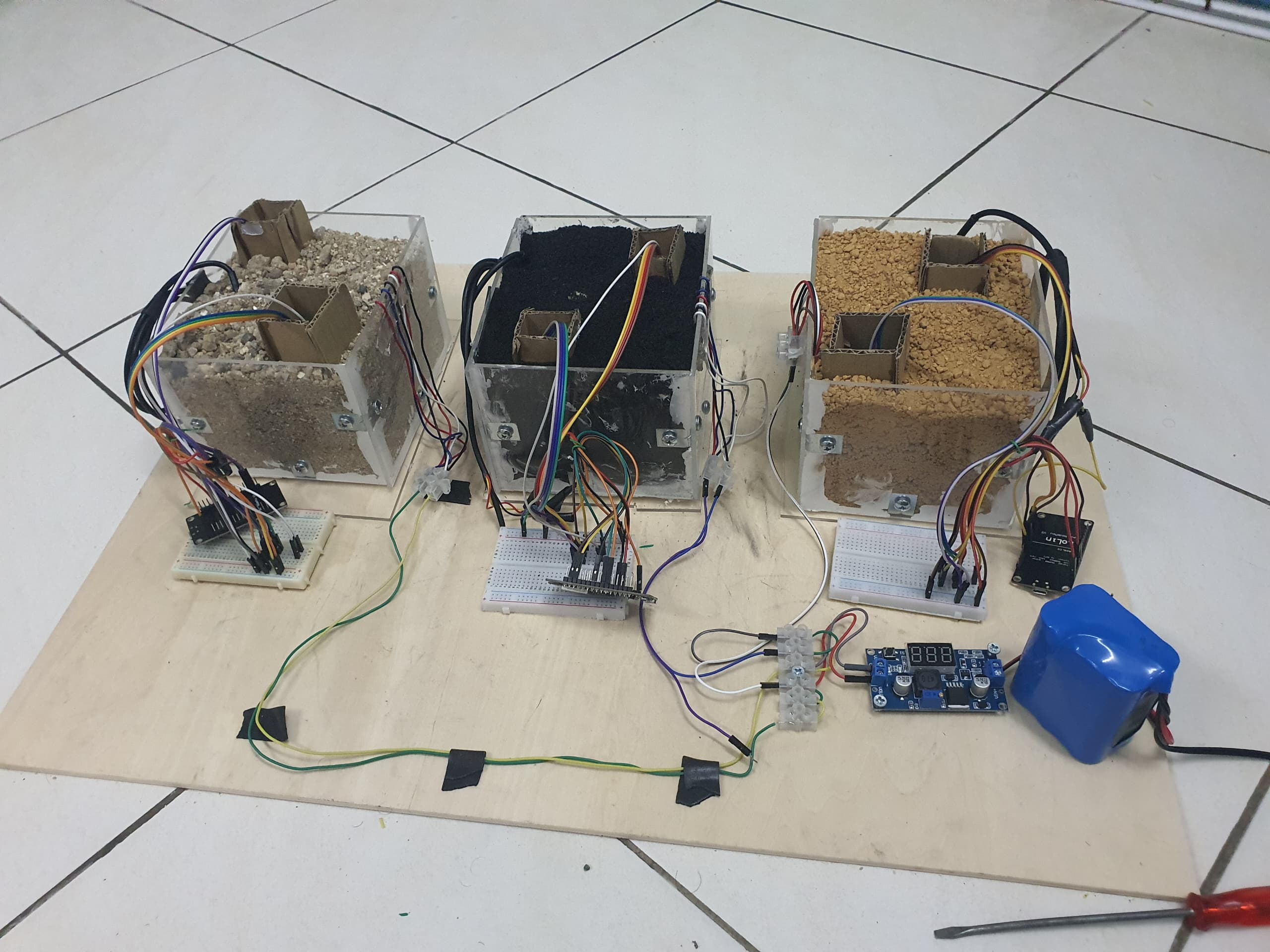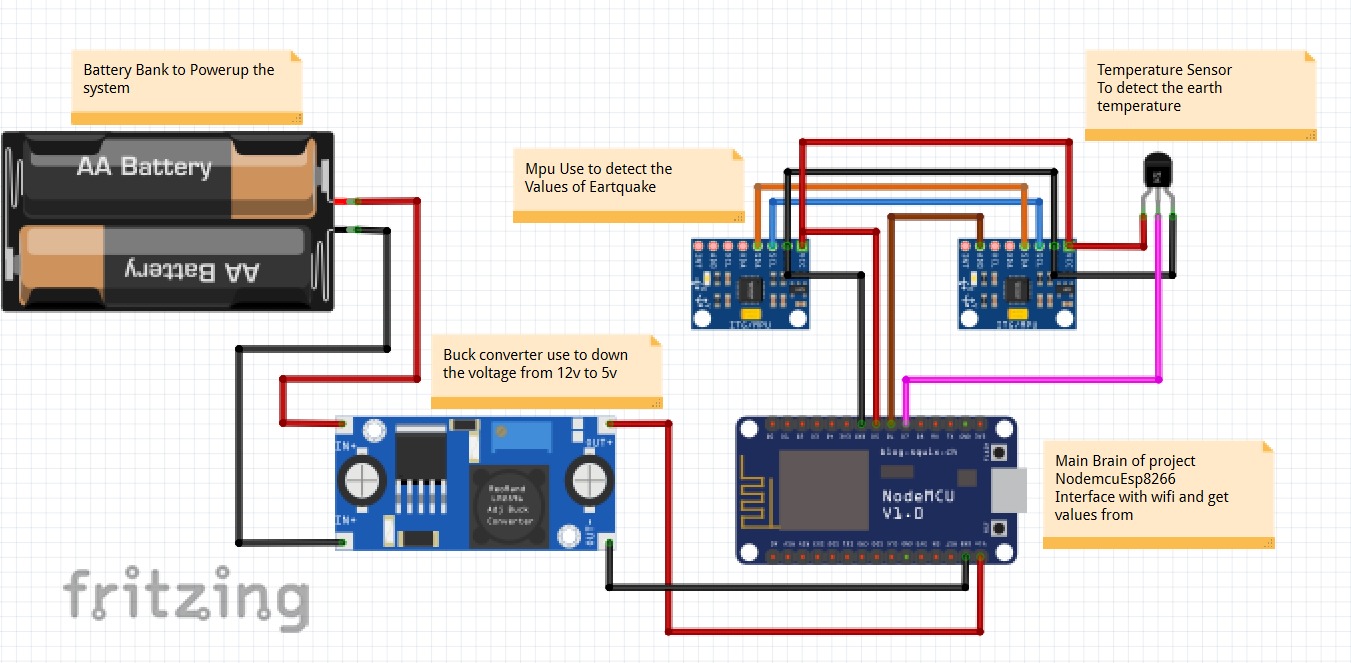Introduction
Earthquakes are natural disasters that can strike without warning, causing widespread damage and loss of life. To improve earthquake preparedness and response, we’ve developed an innovative solution: an Earthquake Notification Alert System powered by Arduino, MPU, NodeMCU, ESP8266, temperature sensor, and battery bank. In this blog post, we’ll delve into how we designed and implemented this system to provide real-time notification alerts in the event of an earthquake.
Components Used
MPU (Motion Processing Unit): Detects seismic activity and vibrations caused by earthquakes.
Arduino Board: Acts as the main controller, processing data from the MPU and triggering alerts.
Buck Converter: Regulates voltage from the battery bank to ensure stable power supply to the system.
NodeMCU: Facilitates Wi-Fi connectivity, allowing the system to send notification alerts via the ESP8266.
ESP8266: Enables communication with external servers or devices to send real-time notification alerts.
Temperature Sensor: Monitors ambient temperature for additional environmental data.
Battery Bank: Provides backup power to ensure the system remains operational during power outages.
System Architecture
Seismic Detection: The MPU continuously monitors for seismic activity and detects vibrations characteristic of earthquakes.
Data Processing: Arduino processes data from the MPU and temperature sensor to determine the likelihood of an earthquake.
Alert Triggering: If seismic activity surpasses predefined thresholds, the system triggers an alert.
Notification Delivery: The NodeMCU and ESP8266 work together to send notification alerts via Wi-Fi to designated recipients or emergency response systems.


Key Features
Real-Time Alerts: The system provides real-time notification alerts within seconds of detecting seismic activity, allowing individuals to take immediate action.
Customizable Thresholds: Users can customize threshold levels for seismic activity and temperature to suit their specific location and requirements.
Battery Backup: The battery bank ensures uninterrupted operation of the system during power outages, enhancing reliability and readiness.
Scalability: The system can be scaled to cover larger areas or integrated with existing emergency response systems for broader coverage.
Benefits
Early Warning: Real-time notification alerts provide valuable time for individuals to take preventive measures and seek shelter during earthquakes.
Improved Preparedness: The system enhances earthquake preparedness by providing timely and actionable information to users.
Community Safety: By sharing notification alerts with local authorities and emergency response agencies, the system contributes to community safety and resilience.
Data Collection: The system collects data on seismic activity and environmental conditions, contributing to ongoing earthquake research and analysis.
Conclusion
In conclusion, the Earthquake Notification Alert System offers a proactive approach to earthquake preparedness and response. By leveraging advanced sensor technology and real-time communication capabilities, the system empowers individuals and communities to mitigate the impact of earthquakes and safeguard lives and property.
